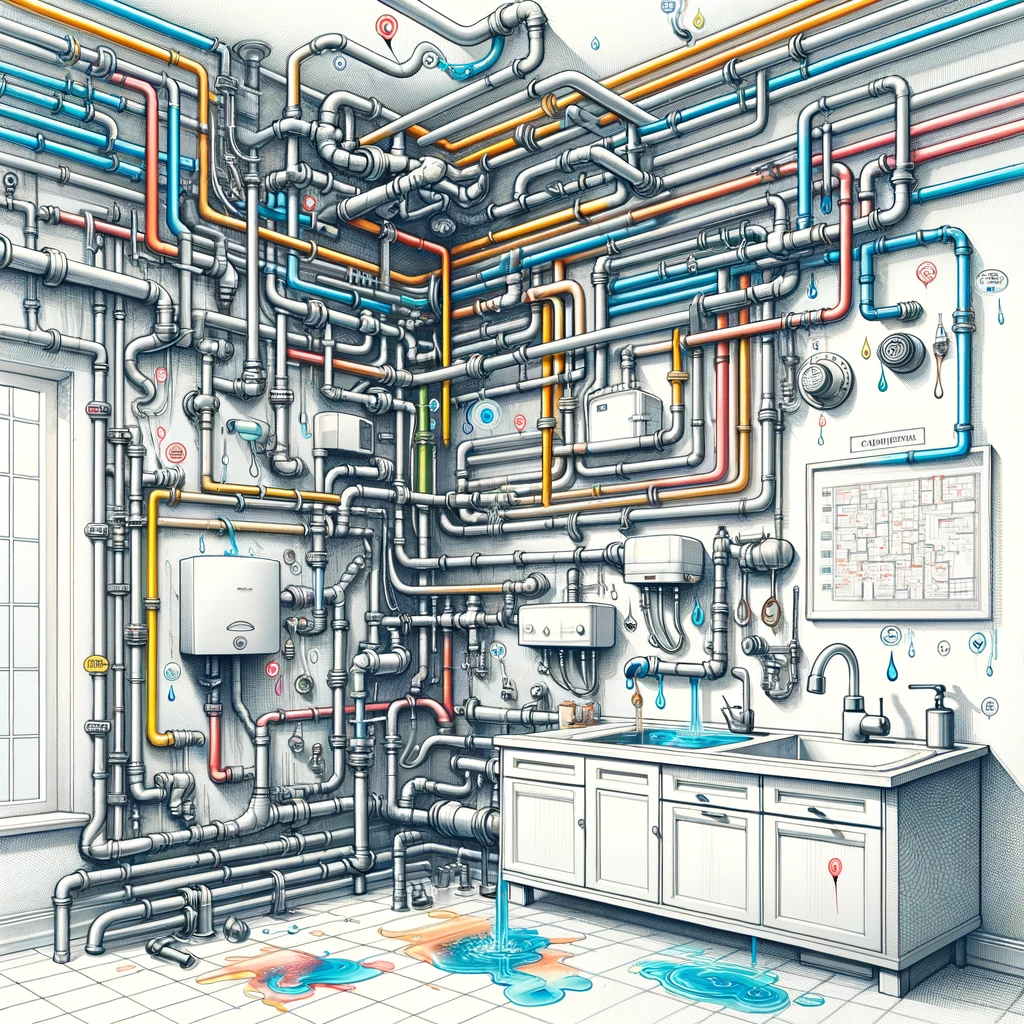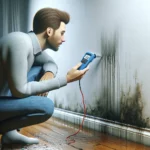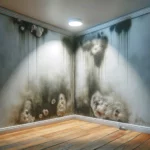Are you on the hunt for the most common culprits of pipe leaks in your plumbing system? Often, leaks lurk beneath sinks, circle water heaters, or hide at pipe joints and connections. This guide will pinpoint those troublesome spots and offer insights into “what is the most likely location to find pipe leaks within the plumbing system” – detecting and dealing with leaks before they wreak havoc on your home.
Key Takeaways
-
The two main plumbing systems in a home are the water supply system, which brings in clean water, and the drain-waste-vent system, which removes wastewater, with pipes commonly made from materials like cast iron, PVC, and copper.
-
High-risk areas for pipe leaks include beneath sinks and vanities, around water heaters, and at pipe joints and connections. Visible signs of leaks, such as water stains, mold, musty smells, and warping or discoloration under sinks, can indicate water damage from leaks.
-
Preventative measures like regular inspections, maintenance, and maintaining optimal water pressure between 40-80 psi are essential for preventing plumbing leaks. For complex issues like slab leaks and frozen pipes, professional plumbing services are recommended.
Understanding Your Home’s Plumbing Layout
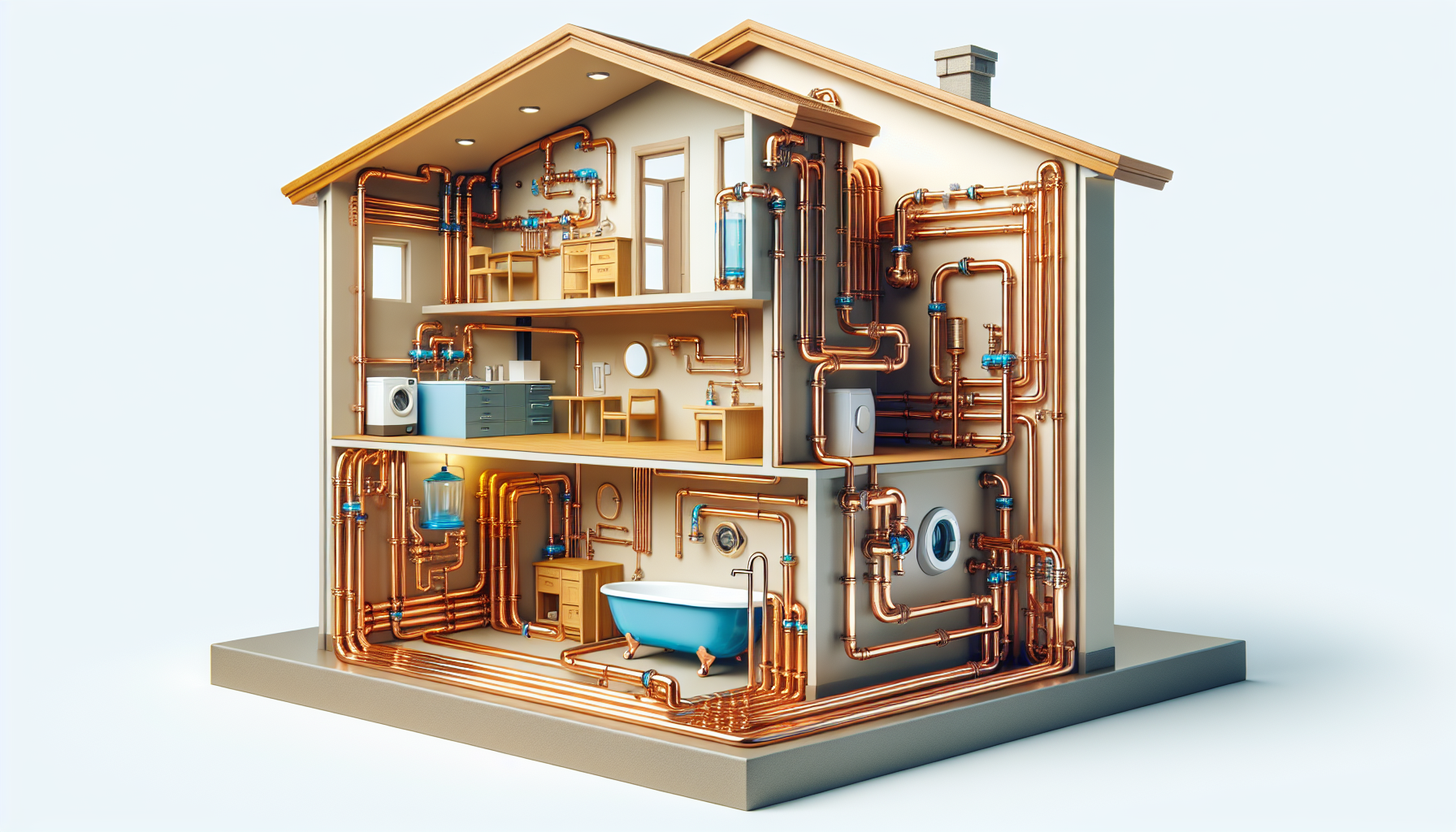
The typical home plumbing layout consists of two separate systems: the water supply system and the drain-waste-vent system. The water supply system, as the name suggests, supplies clean water to your home’s plumbing fixtures and appliances, including sinks, showers, and toilets. This water is delivered through a network of pipes installed along the walls, ceilings, or floors.
The drain-waste-vent system, on the other hand, is responsible for removing waste water and directing it to the septic tank or sewer.
Common materials in home plumbing systems construction are:
-
Cast iron
-
PVC (Poly-Vinyl Chloride)
-
Chromed brass
-
Copper
-
CPVC
-
PEX
These materials have unique properties and typical applications. Comprehending your home’s plumbing layout and the materials used can assist you in pinpointing possible problem areas and leak-prone locations like beneath sinks and vanities, around water heaters, and at pipe joints and connections.
High-Risk Areas for Pipe Leaks in Your Home
Certain areas within your home’s plumbing system are more susceptible to leaks due to their design or exposure to various stressors. These high-risk areas include beneath sinks and vanities, around water heaters, and at pipe joints and connections, as well as leaky faucets.
Being aware of potential leak areas can enable early issue detection, thus averting severe water damage and expensive repairs. One way to achieve this is to detect water leaks before they escalate.
Beneath Sinks and Vanities
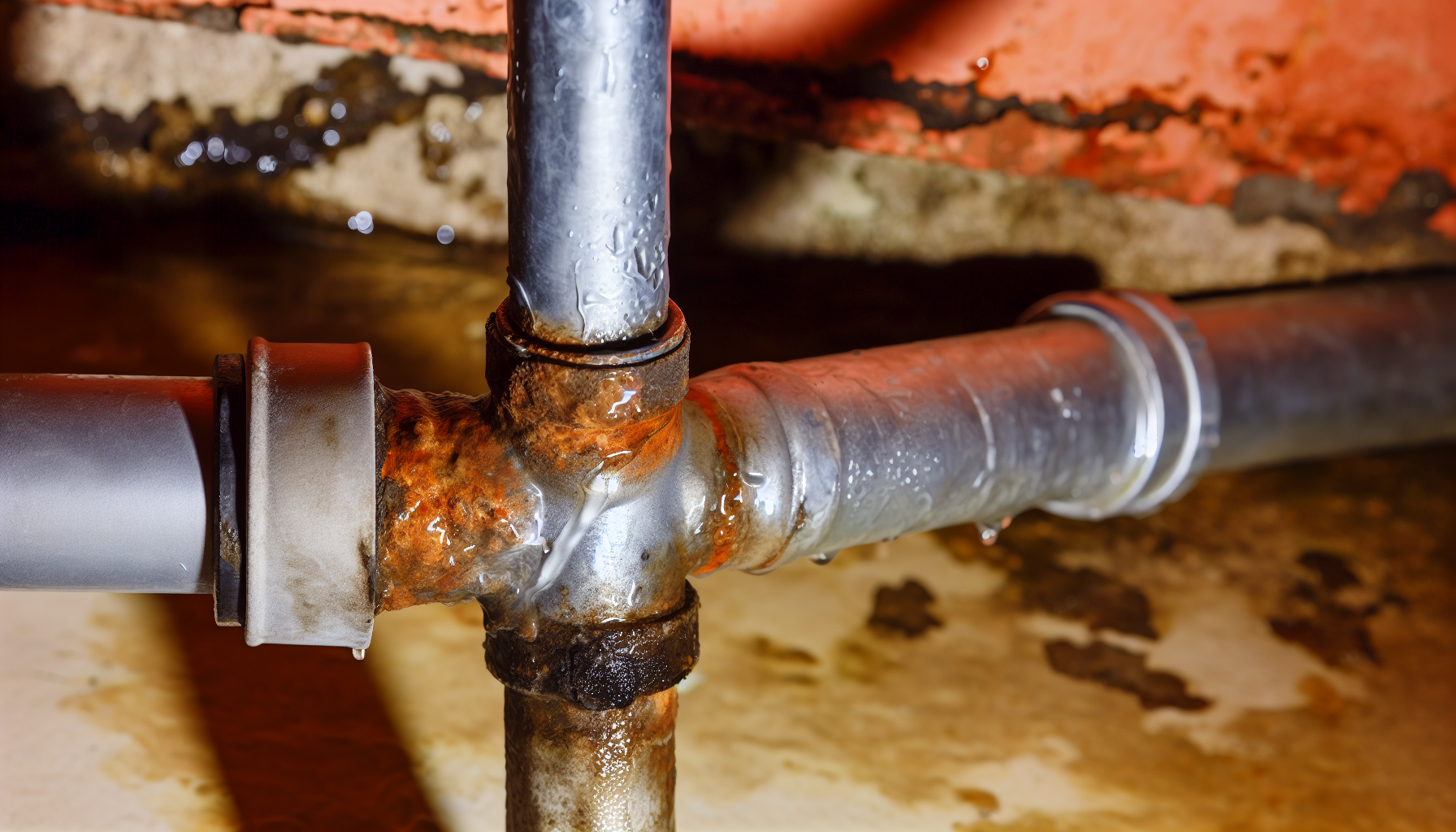
Underneath sinks and vanities, common drain leak contributors include clogged water supply lines, defective p-traps, subpar sink drain pipe connections, worn-out washers, cracked putty, and loosened connections or drain pipe cracks. To uncover these hidden drain leaks, fill the sink with water and press a tissue against each fitting and connection as it drains to check for wetness. Wipe connections with a dry tissue to spot any moisture and visually inspect the area with a flashlight for signs of leaks.
Other potential factors contributing to moisture accumulation beneath sinks and vanities include:
-
Loose nuts
-
Water backing up through the overflow hole
-
Seepage from the kickplate area
-
High humidity in bathrooms
-
Improper disposal of grease and oil leading to clogs
Visible damage under sinks and vanities, such as warping or discoloration, often signifies water damage from leaks that may originate from water supply or drainage lines.
Smart water-leak detectors like the Govee Water Leak Detector can provide early alerts and accurate monitoring to avoid extensive water damage.
Around Water Heaters
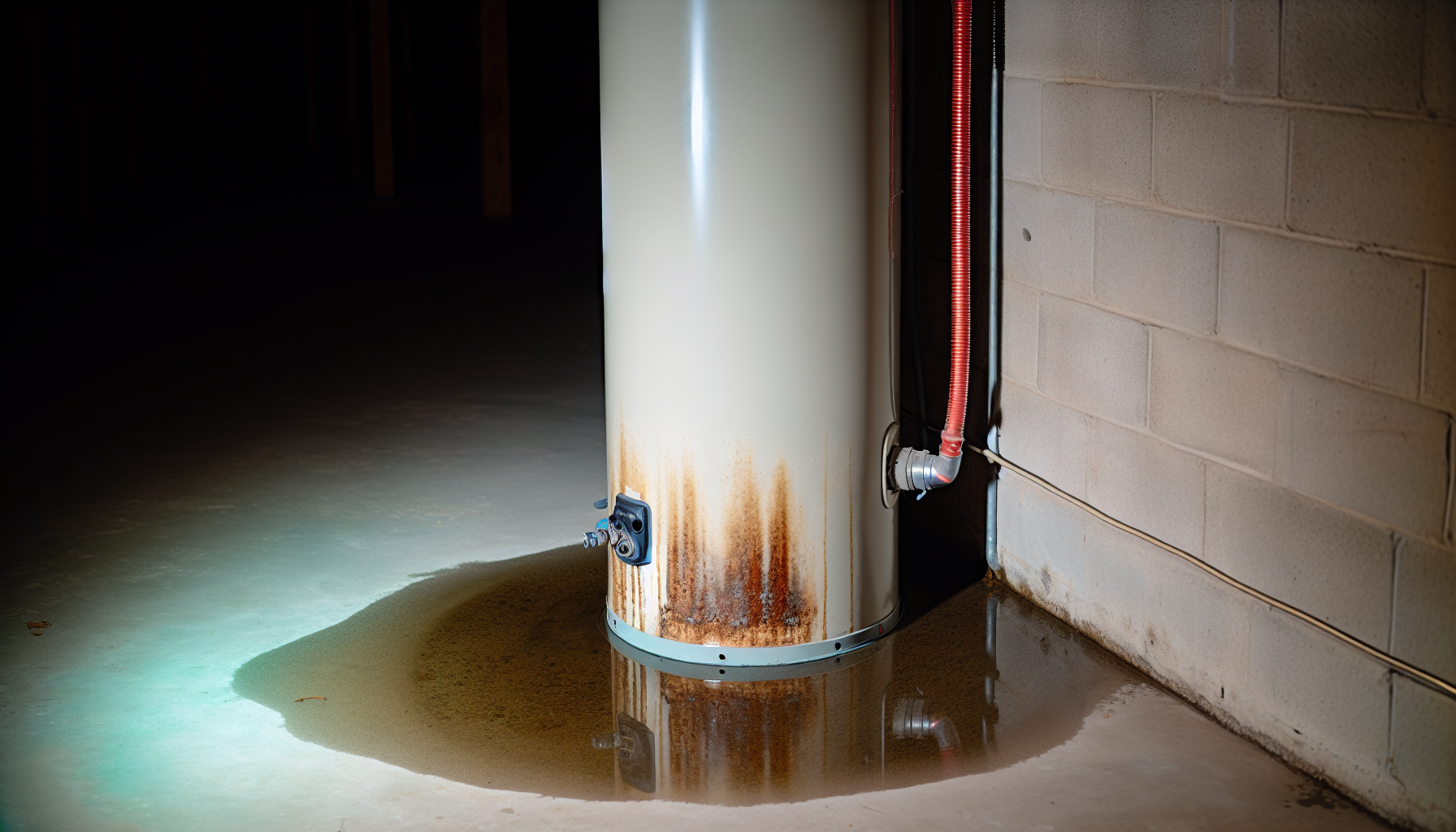
Pipe leaks frequently originate from water heaters, especially aging ones. Indications of a potential leak around a water heater include the presence of water, rust, and malfunctioning controls. Accumulation of rust can lead to internal corrosion and the development of cracks in the tank. A leaking water heater can create unsafe pressures and temperatures, increasing the risk of the water tank exploding and causing flooding in the vicinity of the heater, leading to water damage to the property and its contents.
For water heater leak inspection, follow these steps:
-
Scrutinize the tubes or pipes meticulously, focusing on where they connect to the tank.
-
Check the relief valve and the piping to the water heater for any signs of leaks.
-
Start from the top of the heater, moving downwards, as leaks can travel along surfaces and manifest at a distance from their actual source.
In addition, it is advisable to conduct a thorough inspection of the plumbing pipes located above the water heater for any indications of leaks.
At Pipe Joints and Connections

Due to various factors like broken seals, blocked lines, corrosion, flawed pipe laying, damaged pipe joints, subterranean shifts, and high water pressure, pipe joints and connections are leak-prone areas. To identify leaks in these areas, inspect each fitting by tightening it and observe if any water seeps through upon turning on the water. For outdoor spigots, attach a garden hose and look for any water leakage through the connection while the hose is running.
Moisture, rust, and mineral deposits on the surface of pipe joints and connections can serve as indicators of a leak, as they are often caused by corrosion resulting from imbalanced water pH and mineral content. If left undetected, these leaks can result in substantial water loss, damage to your property, and even compromise the structural integrity of your home.
Indicators of Leaking Pipes
Early leak detection can prevent substantial damage and expensive repairs. Some of the common indicators of leaking pipes include water stains, mold growth, and musty smells.
Water stains on walls or ceilings can be indicative of a potential plumbing leak, while mold growth and musty smells can point to hidden leaks causing wet walls, moisture buildup in ceilings, or floors.
The Tale-Telling Water Stains
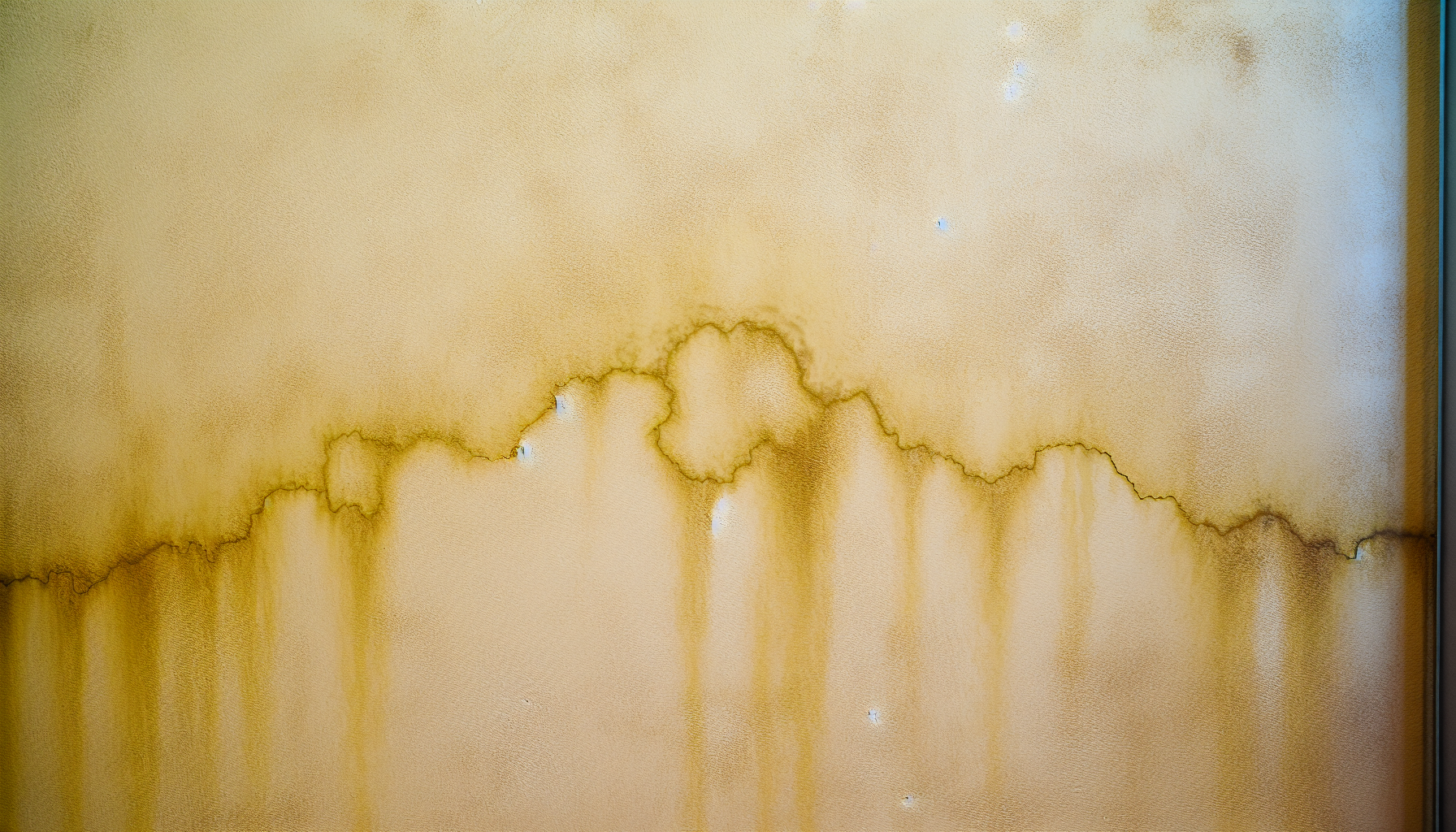
Water stains on walls, ceilings, or floors can be a telling sign of a hidden plumbing leak. These stains can occur as a result of overflowing bathroom fixtures or concealed pipes behind walls and under floors. The primary factors contributing to water stains include leaking pipes, roof issues, malfunctioning HVAC systems, and excessive moisture and humidity.
Typical areas where water stains from leaks can be found include:
-
Areas around showers
-
Bathtubs
-
Toilets
-
Sink faucets and pipes
-
Under dishwashers
-
Exterior faucets
Early identification and repair of these leaks can prevent further damage and potentially save you from expensive repairs.
Mold Growth and Musty Smells
In humid environments, mold can start growing on surfaces within 24 to 48 hours after water exposure. This makes moist and dark areas like underneath sinks and around water heaters prime locations for mold growth. Musty odors from leaking pipes are often attributed to this growth of mold and mildew.
A musty smell is often the first indicator of a potential mold problem. Mold may not emit a potent fragrance, but it is reminiscent of something earthy, aged, or dusty. Left unchecked, mold growth can lead to health issues such as allergies, infections, and even certain neurological disorders. Therefore, it’s crucial to control moisture and promptly address any leaks to safeguard your home’s air quality and your health.
Tackling Hidden Leaks: Where to Look
Although physical leak signs are usually apparent, uncovering hidden leaks can pose a greater challenge. However, utilizing tools like moisture meters and employing techniques like pressure testing can help you locate and diagnose the source of the leak, saving you time, money, and preventing potential damage to your home.
Utilizing Moisture Meters
A moisture meter is a valuable tool for identifying moisture in building materials and locating leaks within a structure. It works by assessing the moisture levels in the air or building materials, thereby aiding in the precise identification of leak sources. A high-quality moisture meter, when used on the appropriate material, can achieve an accuracy of less than 0.1% of the material’s moisture content by weight.
In residential settings, handheld moisture meters are used to gauge moisture levels in materials like wood, drywall, and concrete, helping you detect leaks even when the source is not apparent. Regular inspections using a moisture meter should specifically target areas such as:
-
Inside toilet tanks
-
Faucets
-
Showerheads
-
Under sinks
-
Near water heater tanks
-
In kitchens
-
Around water pipes
-
Sinks
-
Large appliances connected to water
These are common areas where leaks may occur.
Employing Pressure Testing
Another potent method for detecting leaks in pressurized systems such as pipelines and plumbing is pressure testing. It involves:
-
Filling the system with water or another liquid
-
Pressurizing the system
-
Any drop in pressure indicates the presence of leaks, enabling you to identify their location.
To conduct a pressure test, follow these steps:
-
Connect a water pressure gauge to an outdoor hose bib.
-
Close all faucets and fixtures in the home.
-
Initiate the water supply to the gauge.
-
Slowly increase the pressure to the target level.
-
Monitor for any drops in pressure, as they may indicate a leak.
Employing pressure testing can help you discover concealed leaks in pipes, enabling you to take immediate action and prevent further damage.
Preventative Measures Against Plumbing Leaks
Adopting a preventative approach is usually the most effective way to tackle plumbing leaks. Regular inspections and maintenance, as well as maintaining optimal water pressure, can go a long way in preventing leaks and ensuring the longevity of your home’s plumbing system.
Regular Inspections and Maintenance
Yearly regular plumbing inspections can contribute to maintaining your plumbing system’s health. These inspections should include a comprehensive examination for indications of leaks, corrosion, or drips. It is important to closely inspect the water heater, specifically the cold water inlet and hot water exit pipes, drains, P-Traps, faucet aerators, visible pipes for corrosion, and toilet tanks for any signs of water leakage or damage.
In addition to these routine checks, there are several maintenance tasks that can help prevent leaks. These include:
-
Regularly checking faucets and showerheads for signs of leakage
-
Preventing clogs by using drain screens
-
Being mindful of what goes down the drains
-
Monitoring water pressure to prevent strain on pipes and fixtures
Maintaining Optimal Water Pressure
Another vital aspect of averting plumbing leaks is by maintaining optimal water pressure. The recommended water pressure for a residential home is between 40 and 80 pounds per square inch, with the ideal pressure being at 60 psi. Elevated water pressure can exert excessive force on the pipes over time, leading to deterioration and eventual development of leaks.
Indications of excessive water pressure in residential plumbing include water hammer or banging pipes, leaking pipes, damaged household appliances, increasing utility bills, leaking faucets, and constantly running toilets. To maintain optimal water pressure, consider installing pressure regulators, assessing pipe sizes, eliminating sediment and mineral buildup, and inspecting pressure reducing valves.
When to Call a Professional Plumber
Despite regular maintenance and alertness aiding in early leak prevention and detection, there exist scenarios where the assistance of a professional plumber becomes necessary.
Complex plumbing issues like slab leaks and frozen pipes require professional expertise to diagnose and repair effectively.
Dealing with Slab Leaks and Frozen Pipes
Residential slab leak signs encompass floor hot spots, inexplicably high water bills, random water pools, audible dripping or running water sounds, wall or floor cracks, and mold or mildew growth in your home. These leaks can arise from various factors such as faulty piping installation, weakened water lines due to age or abrasion, poor construction practices, adverse chemical reactions, or high water pressure in the plumbing system.
Frozen pipes are another complex plumbing issue that requires professional expertise. Professional plumbers address frozen pipes by employing methods such as thawing the ice by running water through the pipe and applying heat to the affected section using tools like electric heating pads, heat guns, heat lamps, or electric pipe thawing machines. Trying to thaw frozen pipes yourself, especially without the proper tools and knowledge, can lead to more damage and costly repairs.
Summary
In conclusion, understanding your home’s plumbing layout, identifying high-risk areas for leaks, recognizing the symptoms of pipe leaks, and taking preventative measures can significantly reduce the risk of plumbing leaks. However, in the event of complex plumbing issues like slab leaks and frozen pipes, it’s crucial to call a professional plumber to avoid further damage and ensure a safe and effective repair.
Frequently Asked Questions
What is most likely location to find pipe leaks?
The most likely locations to find pipe leaks in your home are the 7 common places mentioned.
How do I find out where a pipe is leaking?
To find a pipe leak, you can look for wet spots, use dye tablets in the toilet tank, and listen for running water in the toilet. These methods can help you narrow down the source of the leak.
What are the typical indicators of a slab leak in a residence?
Typical indicators of a slab leak in a residence include hot spots on the floor, high water bills, pools of water, sounds of dripping water, cracks in walls or floors, and mold or mildew growth. If you notice these signs, it’s important to address the issue promptly.
What is the recommended water pressure for a residential home?
The recommended water pressure for a residential home is between 40 and 80 pounds per square inch, with the ideal pressure being at 60 psi. It’s important to ensure proper pressure to avoid damage to plumbing and appliances.
How often should I schedule plumbing inspections?
You should schedule plumbing inspections once per year to ensure everything is in working order.
[/et_pb_text][/et_pb_column][/et_pb_row][/et_pb_section]
